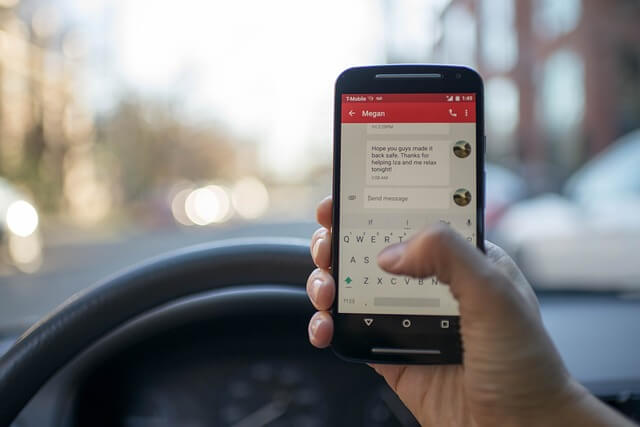When you’re behind the wheel, you owe all other drivers a duty to abide by traffic laws and safely operate your vehicle. Likewise, all other drivers owe you this same duty. If someone breaches this duty by behaving negligently, they can be held liable for the damages they cause in an accident.
Distracted driving is one of the most frequent causes of auto accidents. Its role in causing accidents is something that every driver should understand to protect their legal rights. After an accident you didn’t cause, you will want to know how you may be able to hold that other driver responsible for driving while distracted. First, it requires understanding more about how it factors into liability.
What Distractions Can Cause Car Accidents?
Distractions during driving are usually divided into three categories, though some actions or inactions can overlap. There are visual distractions that make a driver take their eyes off the road. Manual distractions are when a driver takes their hands off the steering wheel while cognitive distractions occupy the mind, so the driver isn’t focused on driving. Common driving distractions include:
- Texting while driving
- Talking on the phone, particularly without using a hands-free adaptor
- Eating or drinking
- Applying makeup
- Shaving
- Reaching for an object
- Talking to passengers in the vehicle
- Daydreaming
How Distracted Driving Contributes to a Driver’s Car Accident Liability
If you were in an accident someone else caused, you may not immediately know that they were distracted during the crash. When the police respond to the accident scene, they may discover something that shows the other driver was distracted. Witnesses may have observed the person texting while driving or engaging in other behaviors that caused the accident. These things can all be noted in the traffic accident report, which can help prove the driver’s liability.
Investigations will typically need to be conducted to uncover other evidence. If you sustained serious injuries in this accident, your attorney will most likely request the cell phone records of the other driver. They will also look for traffic camera footage to see if there is visual evidence that confirms the other driver was distracted.
These steps are necessary in terms of proving negligence, since all drivers must drive with reasonable care. When this duty is breached by engaging in distracted activities, the driver increases the risk of accidents. After causing your accident, the investigations and evidence will help fill in the blanks that prove the distraction they engaged in was directly responsible for your accident, and that it caused you to suffer injuries and damages.
For example, a driver who is texting while driving may fail to notice that the light has turned red. They may then continue driving at full speed and collide with traffic that has the right of way. In this instance, the driver’s texting would be directly linked to causing the crash. If you can prove the other driver was distracted at the time of the incident, then they would be held liable for your compensation.
Types of Evidence Used to Prove Distracted Driving
After a car accident, it’s best to contact an auto accident lawyer in Los Angeles to help you get the evidence needed to prove negligence and liability. Police reports can be helpful if responding officers noted any details about potential evidence of distraction. These reports may also have statements from eyewitnesses who may have seen the driver applying makeup or texting before the crash.
Phone records and apps may also provide crucial clues as to whether the driver was texting or posting when they should have had their attention on the road. Traffic cameras, nearby surveillance footage, and dashcam footage may be admissible in these cases, and when they have clear-cut evidence that the other driver was distracted, it’s hard for them to argue their way out of liability.
Additionally, if the other driver has a newer model vehicle, it may have a system that records data, much like an airplane black box. It may have recorded the speed, whether brakes were applied, and other metrics before and during the impact. When you work with an attorney, they will be able to obtain these pieces of evidence, as well as hire experts to testify. Accident reconstructionists can be highly beneficial to these types of cases as they can look at all the data and develop videos that make it easy for the judge or jury to see that distracted driving was the cause.

